[06:30] Dr. Boroditsky claims that speakers of different languages have to think differently because speakers must pay attention to such different information just to be able to speak (SAR School for Advanced Research, 2017).
Kuuk Thaayorre language speakers must pay attention to absolute cardinal directions all the time to be able to have normal daily conversations because they do not use any relative spatial terms (Boroditsky, 2011). Even just for greetings, they may need to give accurate responses regarding directions.
In my own experience, Chinese speakers need to focus on the relationships among family members and relatives all the time to call them properly. The reason is that there are different words for all types of relatives. For example, Boroditsky (2011) said, “I would have to specify whether a titular uncle is maternal or paternal and whether he is related by blood or marriage because there are different words for all these different types of uncles” (p.64).
[13:25] Dr. Boroditsky mentions that times don’t just have to be on the horizontal axis (SAR School for Advanced Research, 2017). For example, in Mandarin, the past is up, and the future is down, indicating a vertical axis in addition to the horizontal one.
According to Boroditsky (2011), the direction of writing in a language affects how people organize time. For example, in accordance with their respective writing directions, English speakers arrange a series of events from left to right and Hebrew speakers tend to arrange events from right to left.
 For Chinese speakers, the overwhelming majority of writing follows the same direction as English speakers today. Vertical writing (from top to bottom in columns) is another standard format for written Chinese, especially for classical texts and calligraphy (Holdenje, 2023). The vertical format is still commonly used in traditional settings. I think this is one of the reasons why Chinese speakers use an additional vertical axis (up for past and down for future) for times.
For Chinese speakers, the overwhelming majority of writing follows the same direction as English speakers today. Vertical writing (from top to bottom in columns) is another standard format for written Chinese, especially for classical texts and calligraphy (Holdenje, 2023). The vertical format is still commonly used in traditional settings. I think this is one of the reasons why Chinese speakers use an additional vertical axis (up for past and down for future) for times.
[18:37] Dr. Boroditsky claims that changing how people talk can change how people think (SAR School for Advanced Research, 2017).
As a multilingual learner (Chinese and English), I think my thinking has changed after speaking English daily. For example, I began to value autonomy, personal achievement, and self-independence more during my university life. Being dependent upon my parents is considered embarrassing for me. Also, I place a greater emphasis on being competent and unique. My current way of thinking is more aligned with individualism, which emphasizes personal identity and is valued more by Western cultures (Kendra, 2022).
[29:31] Dr. Boroditsky claims that English speakers don’t strongly distinguish between accidents and things that are intentional (SAR School for Advanced Research, 2017).
Similar to English, there is no grammatical difference in Mandarin to distinguish between accidents and intentionality. We primarily rely on context, verb usage, and additional words. For example, the most straightforward way is to add the adjective “故意的” (means intentionally or on purpose) or “意外的” (means unexpected or accidental) before the verb.
According to Boroditsky (2011), the differences in how people describe events influence the following eyewitness memory. In my own experience, I remember “who did things” better than “whether the thing is intentional or accidental.”
[36:32] Dr. Boroditsky mentions that there are no exact number words in the Pirahã language and that Pirahã people have trouble doing even basic numerical tasks (SAR School for Advanced Research, 2017).
Chinese people have a reputation for strong mathematical abilities. For example, China currently ranks first based on the medal count at the International Mathematical Olympiad (Wikipedia contributors, 2023). Except for the growth mindset (the belief in the ability of all students) and the pedagogical approach used in the Chinese education system, language may also contribute to the perception that Chinese people excel in math (Maxwell, 2021). 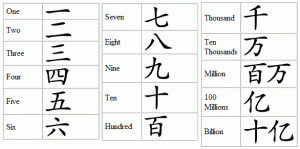 For instance, the Chinese number system is relatively straightforward, and the names for numbers are highly regular, making it easier for Chinese learners to grasp basic numerical concepts at an early stage. According to Zhang et al. (2017), “language abilities were able to significantly predict both informal and formal math skills” for Chinese-speaking children (p.9).
For instance, the Chinese number system is relatively straightforward, and the names for numbers are highly regular, making it easier for Chinese learners to grasp basic numerical concepts at an early stage. According to Zhang et al. (2017), “language abilities were able to significantly predict both informal and formal math skills” for Chinese-speaking children (p.9).
[45:27] Dr. Boroditsky mentions that linguistic diversity, derived from the adaptability and flexibility of human intelligence, provides valuable cognitive toolkits for humans (SAR School for Advanced Research, 2017).
Language diversity provides me opportunities to think about things differently and expand my visions of what is possible, allowing me to see more opportunities in the world. Exposed to multiple languages can also have cognitive advantages, including improved problem-solving skills, better multitasking abilities, and increased creativity (Skrypkina, 2022). On a social level, Token (2023) claimed that linguistic diversity is essential for achieving social justice and equality.
[50:40] Dr. Boroditsky claims that it is impossible to achieve exact translation across any two languages (SAR School for Advanced Research, 2017).

I strongly agree with Dr. Boroditsky’s claim. Languages have unique structures, grammatical rules, vocabulary, cultural references, intonation, pragmatics, and context dependency, making it impossible to precisely translate across languages. Some languages have words or expressions that do not exist in other languages. For instance, the Chinese word “撒娇” (an expression of affection; a behavior where a person acts in a sweet way to seek attention, care, or pampering from their partner) has no direct equivalent in English or Japanese (my partner is from Japan).
References
Boroditsky, L. (2011). How language shapes thought. Scientific American, 304(2), 62-65.
Holdenje. (2023, August 15). Right to Left? Left to Right? Decoding Chinese Reading Direction – maayot. maayot • Daily Chinese Reading. https://www.maayot.com/blog/chinese-reading-direction/
Kendra. C. (2022). What is a collectivist culture? Verywell Mind. https://www.verywellmind.com/what-are-collectivistic-cultures-2794962#:~:text=Collectivism%20stresses%20the%20importance%20of,are%20promoted%20in%20individualistic%20cultures.
Maxwell, D. (2021, September 30). The Secrets of Chinese mathematics – Domino Chinese. Domino Chinese. https://www.dominochinese.com/posts/the-secrets-of-chinese-mathematics/
SAR School for Advanced Research. (2017, June 7). Lera Boroditsky, how the languages we speak shape the way we think [Video]. YouTube.
Skrypkina, T. (2022, August 31). 6 Powerful Benefits of Embracing Linguistic Diversity – Verbal bridges. Verbal Bridges. https://verbalbridges.com/6-powerful-benefits-of-embracing-linguistic-diversity/
Toke, N. (2023). Linguistic Diversity: What Is It, How To Encourage It, And Why Is It Important [2023 DEI Resources] | Diversity for Social Impact. Diversity for Social ImpactTM. https://diversity.social/linguistic-diversity/
Wikipedia contributors. (2023). List of countries by medal count at International Mathematical Olympiad. Wikipedia. https://en.wikipedia.org/wiki/List_of_countries_by_medal_count_at_International_Mathematical_Olympiad
Zhang, J., Fan, X., Cheung, S. K., Meng, Y., Cai, Z., & Hu, B. Y. (2017). The role of early language abilities on math skills among Chinese children. PLOS ONE, 12(7), e0181074. https://doi.org/10.1371/journal.pone.0181074
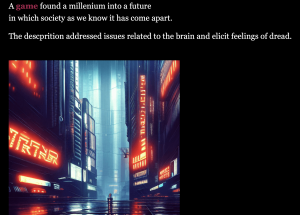




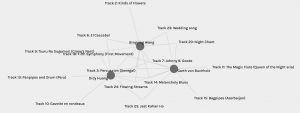




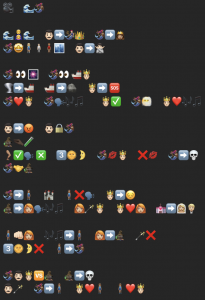

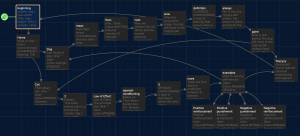
 For Chinese speakers, the overwhelming majority of writing follows the same direction as English speakers today. Vertical writing (from top to bottom in columns) is another standard format for written Chinese, especially for classical texts and calligraphy (Holdenje, 2023). The vertical format is still commonly used in traditional settings.
For Chinese speakers, the overwhelming majority of writing follows the same direction as English speakers today. Vertical writing (from top to bottom in columns) is another standard format for written Chinese, especially for classical texts and calligraphy (Holdenje, 2023). The vertical format is still commonly used in traditional settings.  For instance, the Chinese number system is relatively straightforward, and the names for numbers are highly regular, making it easier for Chinese learners to grasp basic numerical concepts at an early stage. According to Zhang et al. (2017), “language abilities were able to significantly predict both informal and formal math skills” for Chinese-speaking children (p.9).
For instance, the Chinese number system is relatively straightforward, and the names for numbers are highly regular, making it easier for Chinese learners to grasp basic numerical concepts at an early stage. According to Zhang et al. (2017), “language abilities were able to significantly predict both informal and formal math skills” for Chinese-speaking children (p.9).

 I imagine an archeologist aiming to understand this temporal period might view my items in a similar way as I view those equivalent things (as I mentioned above) from 15 years ago. The archeologist may think that many of my items have limited functions or can be combined into an integrated product. For example, tangible bank cards might be ousted completely; people only need online banking apps. I believe that as technology develops, items people carry daily in bags will become more integrated.
I imagine an archeologist aiming to understand this temporal period might view my items in a similar way as I view those equivalent things (as I mentioned above) from 15 years ago. The archeologist may think that many of my items have limited functions or can be combined into an integrated product. For example, tangible bank cards might be ousted completely; people only need online banking apps. I believe that as technology develops, items people carry daily in bags will become more integrated.